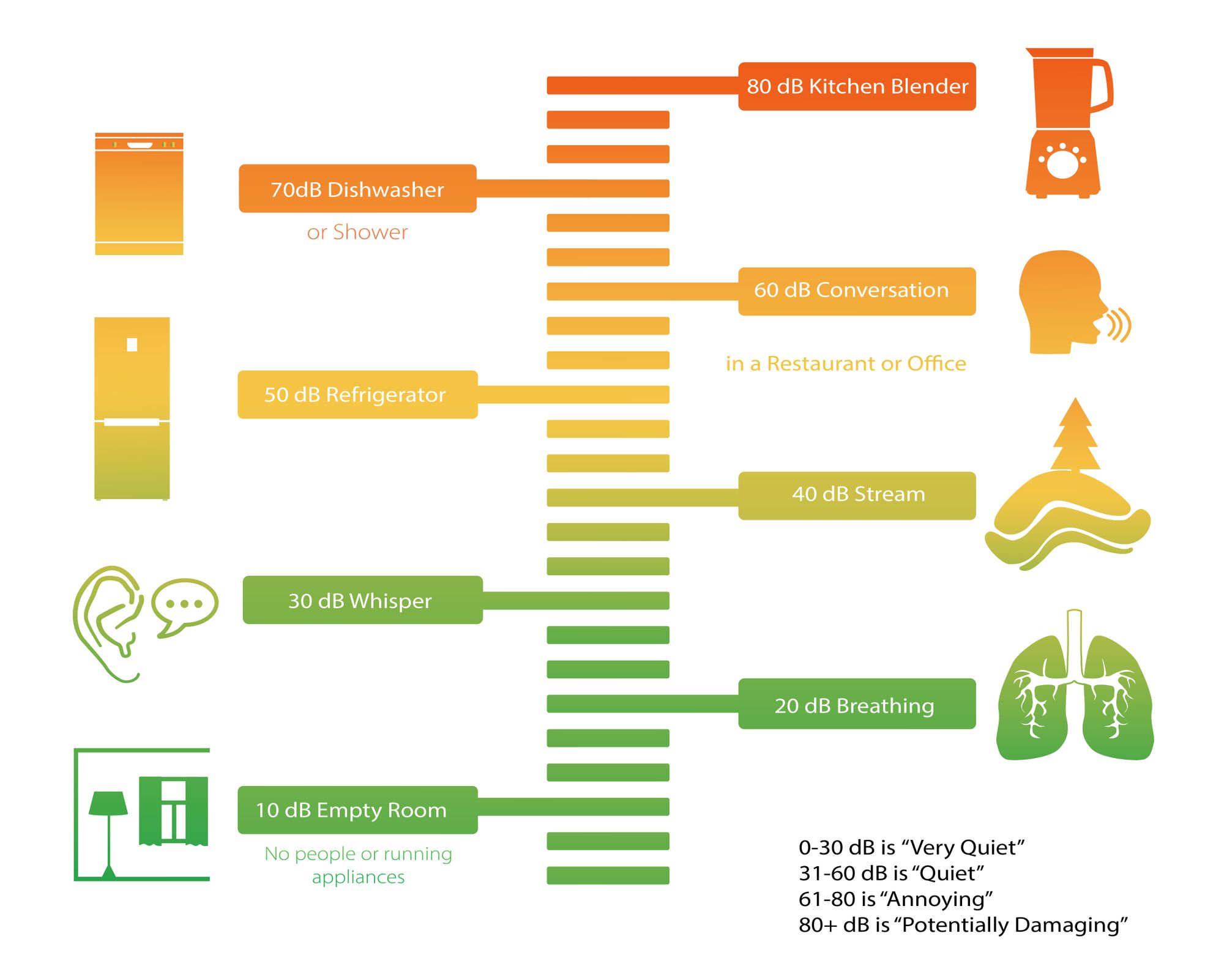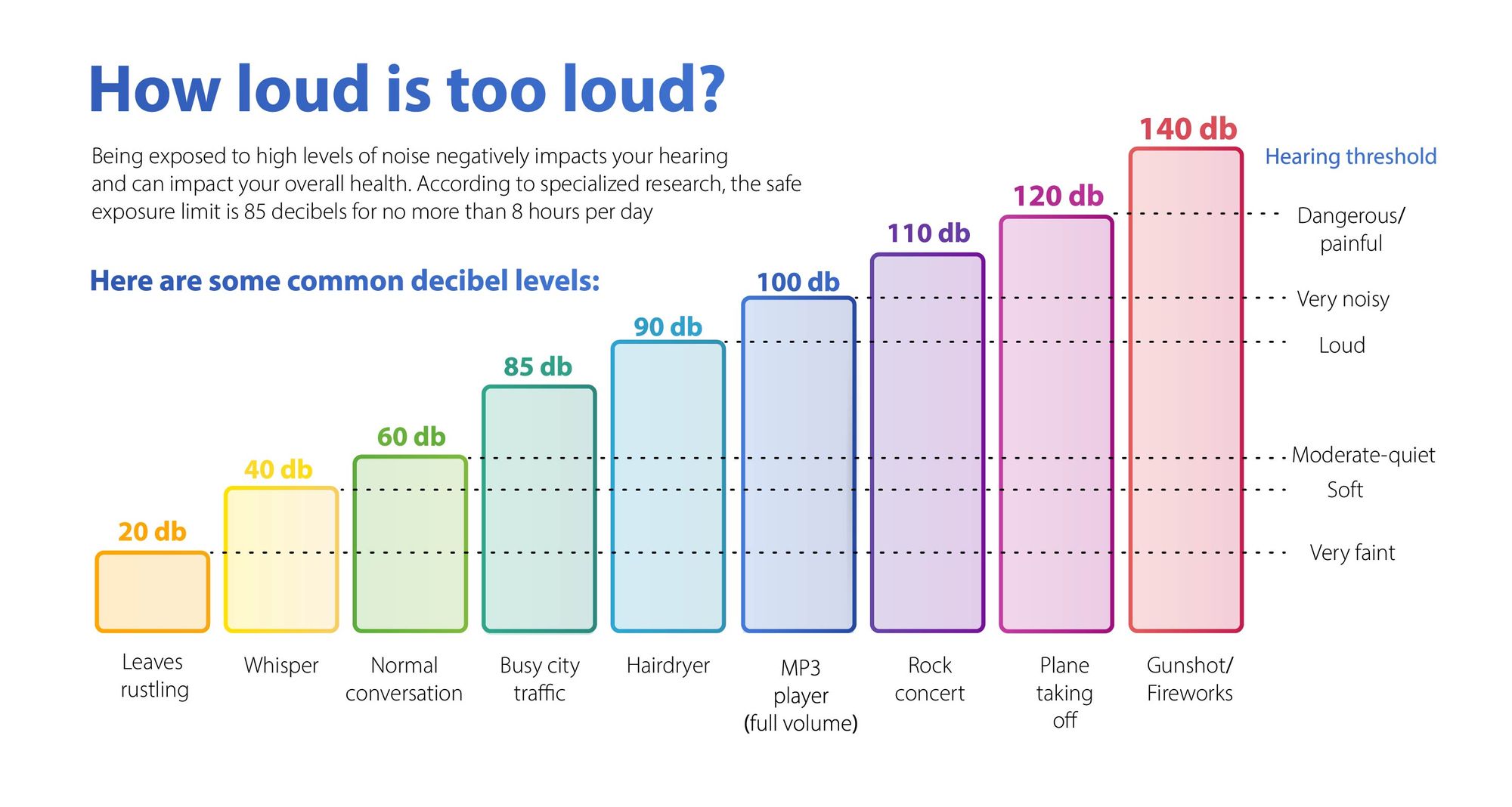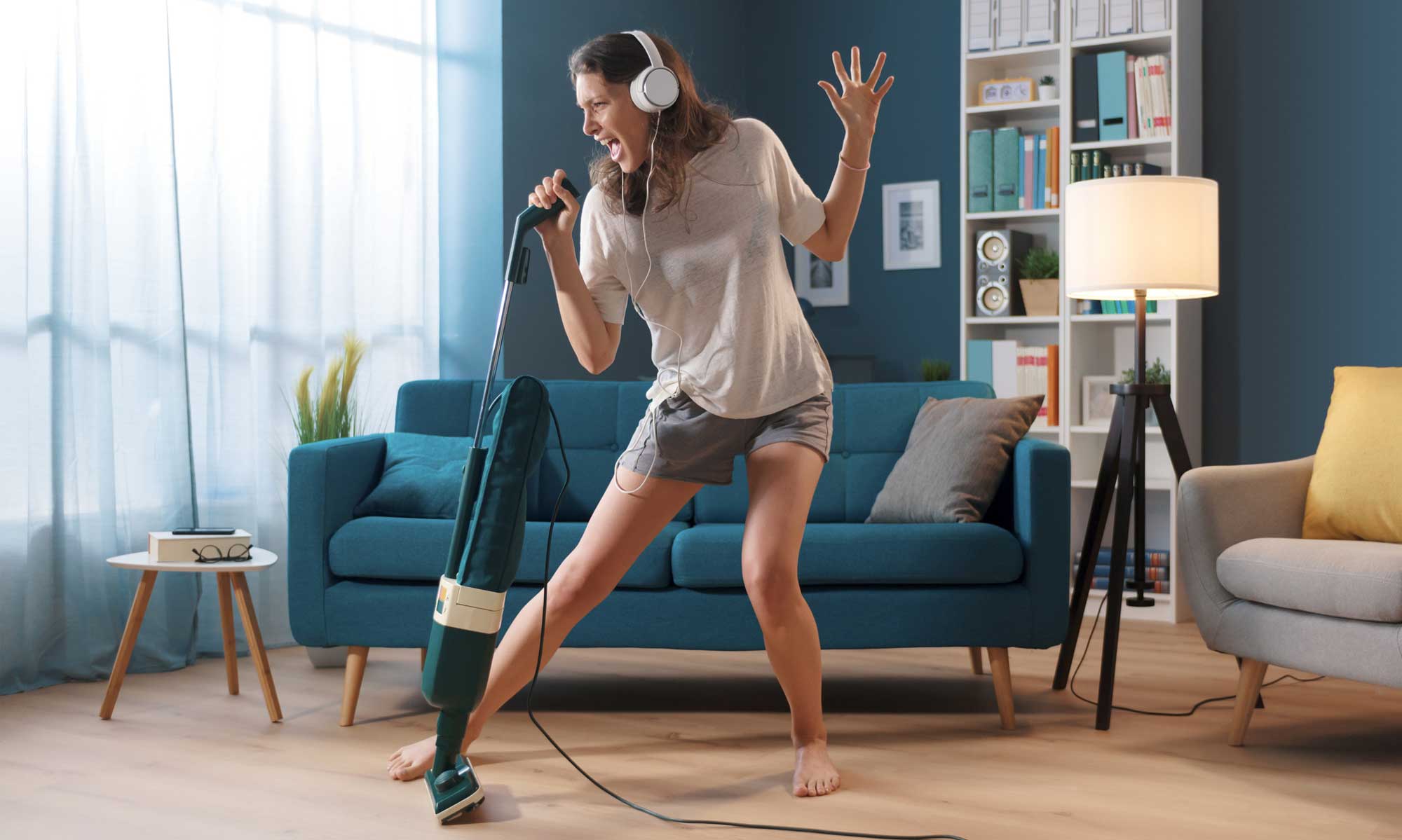- What Is 70 Decibels
- How Loud Is 70 Decibels
- What Does 70 Db Sound Like
3.1 Common Sources - Why Measure Noise Level
- Is 70 Decibels Too Loud?
- What Decibel Level Is Dangerous
6.1 Consequences Of Exposure To Dangerous Decibel Levels
6.2 How To Protect Your Hearing From Loud Noises - Measure Noise Levels With Decibel Pro App
Sound measurement is complex and the decibel scale can get confusing. Especially since it’s logarithmic instead of linear. And since there’s no better way to understand a complex topic other than practically, in this article, we’re going to address 70 dB noise.
We’ll be getting into how loud 70 decibels is, complete with 70 dB equivalents and examples. Read on to find out everything you need to know about 70 dB.
What Is 70 Decibels?
Decibels is the measurement unit used for the intensity of sound. Humans can hear decibel levels starting from 0 dB and 120-140 dB is the sound threshold of pain.
70 dB is in the middle of this decibel range. It is equivalent to the sound level of a regular washing machine. It is also equivalent to the noise level in an office environment or inside a car driving at 60 mph.
How Loud Is 70 Decibels?
70 decibels is as loud as a washing machine or a dishwasher. It is a moderate noise level.

70 dB noise is not considered harmful to human hearing. However, extended exposure to levels above 55-60 dB can be considered disturbing or become annoying.
For public or general environments, the Environmental Protection Agency considers that exposure to 70 decibels over a period of 24 hours is a level that can prevent measurable hearing loss over a lifetime. Therefore, 70 dB is the maximum level of noise you should be exposed to during a normal day.
This maximum level of 70 dB is considered for a 24-hour average. If you are exposed to levels above 70 dB you will need to balance out that exposure with a sufficient period of quiet to prevent hearing damage or hearing loss.
For comparison, the generally accepted exposure to noise in work environments is limited to 85 dB over a period of 8 hours/day.
What Does 70 dB Sound Like?
To understand what 70 dB sounds like, imagine standing next to a washing machine or in an open office. Those are sounds equivalent to 70 dB.

What 70 dB sounds like will also depend on where you are standing compared to the sound source. The closer you are to the sound source, the louder the noise level will be.
When the washing machine or dishwasher is close to your ear, you will perceive the sound louder. Move 1 or 2 meters away from it and it will become quieter. However, this does not mean that the sound generated by the washing machine or dishwasher changes. It’s still at 70 dB. The only thing changing is your perception of that sound.
Exposure time is another important aspect. While you may not be annoyed by how loud 70 dB is if you are exposed to it for a few minutes, extended or repeated exposure can become disturbing. It can affect your concentration, raise blood pressure levels, and cause a number of adverse health effects.
Common Sources
Here is a list of sound sources that are 70 dB equivalent (on average):
- A normal conversation: 60-70 dB
- Open office noise: 65-75 dB
- An alarm clock: 70-80 dB
- Washing machine: 70 dB
- Dishwasher: 70 dB
- Restaurant: 70-80 dB
- Vacuum cleaner: 60-80 dB
Why Measure Noise Levels?
Measuring the noise levels you are exposed to is a good way to prevent hearing damage and protect your hearing. Noise-induced hearing loss is not reversible. Therefore, prevention is the best option.

You should regularly measure noise levels in the environments you are constantly exposed to such as your home and your workplace. It is especially important to measure noise levels when you know they may be exceeding recommended limits, such as at concerts or sporting events.
Is 70 Decibels Too Loud?
70 decibels is not considered too loud. It is a moderate noise level, under the level of 85 dB that is considered damaging to human hearing.
However, 70 decibels also represents the upper limit of the EPA recommended 24-hour average noise level exposure. Even if it’s not considered a dangerous level, prolonged exposure to noise levels above 70 dB can still lead to hearing damage or hearing loss.
If you happen to become exposed to peak noise levels exceeding 70 dB for a shorter period, balance that exposure out with some quiet time. This way, you can give your ears a chance to recover from the loud noise exposure and avoid any temporary or permanent damage.
What Decibel Level Is Dangerous?
Sound levels exceeding 85 dB are considered dangerous and potentially damaging to human hearing. However, it all depends on the duration of the exposure.

Noise levels above 80-85 decibels over an 8-hour period is the generally accepted limit from which employers have to provide hearing protection to workers. These limits are regulated by law for work environments with high noise levels.
However, for public environments, no dangerous noise limits are defined. The recommended maximum level in any general setting is 70 dB over a 24-hour period.
Consequences of Exposure to Dangerous Decibel Levels
Being exposed to loud noise can affect the nerve endings in our inner ear and damage them. In turn, this can cause temporary or permanent hearing damage. If the exposure to loud noise continues, the result is permanent hearing loss.
Unfortunately, once it is lost, hearing cannot be restored. That’s why it’s vital that you monitor noise levels and avoid unnecessary dangerous exposure.
How To Protect Your Hearing From Loud Noises
There are several things you can do to protect your hearing from exposure to loud noises. Avoiding unnecessary exposure, controlling the volume on your personal devices, or wearing hearing protection are the most common solutions.
Keep in mind that the recommended maximum exposure over a 24-hour period is 70 decibels. You can use a sound level meter app to monitor noise levels. Plus, remember the rule of thumb: if you are having difficulties hearing someone talk to you over the noise, then that environment is too loud.
Adjust the VolumeIf you happen to enjoy listening to music or your TV too loud, turn down the volume to avoid hearing damage. Another option is to limit the time you spend listening to loud music on your headphones and balancing that time off with quiet time. |
Try to Stay Further from the Sound SourceMoving away from the source of a loud sound is the easiest way to protect your hearing. The further away you are from the source, the less likely you are to incur any hearing damage. So, the next time you are at a concert, move away from the speakers. Similarly, the next time someone uses a power tool near you, move further away from it. |
Try Hearing ProtectionIf you cannot limit the volume yourself or move away from the source of loud noise, you must wear hearing protection. You can find different types of earmuffs and earplugs online or in specialized stores. |
Measure Noise Levels with Decibel Pro
The most convenient way you can measure noise levels is with a sound level app.
Decibel Pro is a reliable sound level app that you can download on your iPhone or iPad. It instantly reads noise levels and offers professional sound level measurements.
Use it to measure noise levels whenever you think you may be exposed to loud noise and to monitor the noise level of your home or work environment. The app also comes with a feature that calculates your daily exposure according to NIOSH and OSHA standards.
To learn more about the Decibel app, click here.



